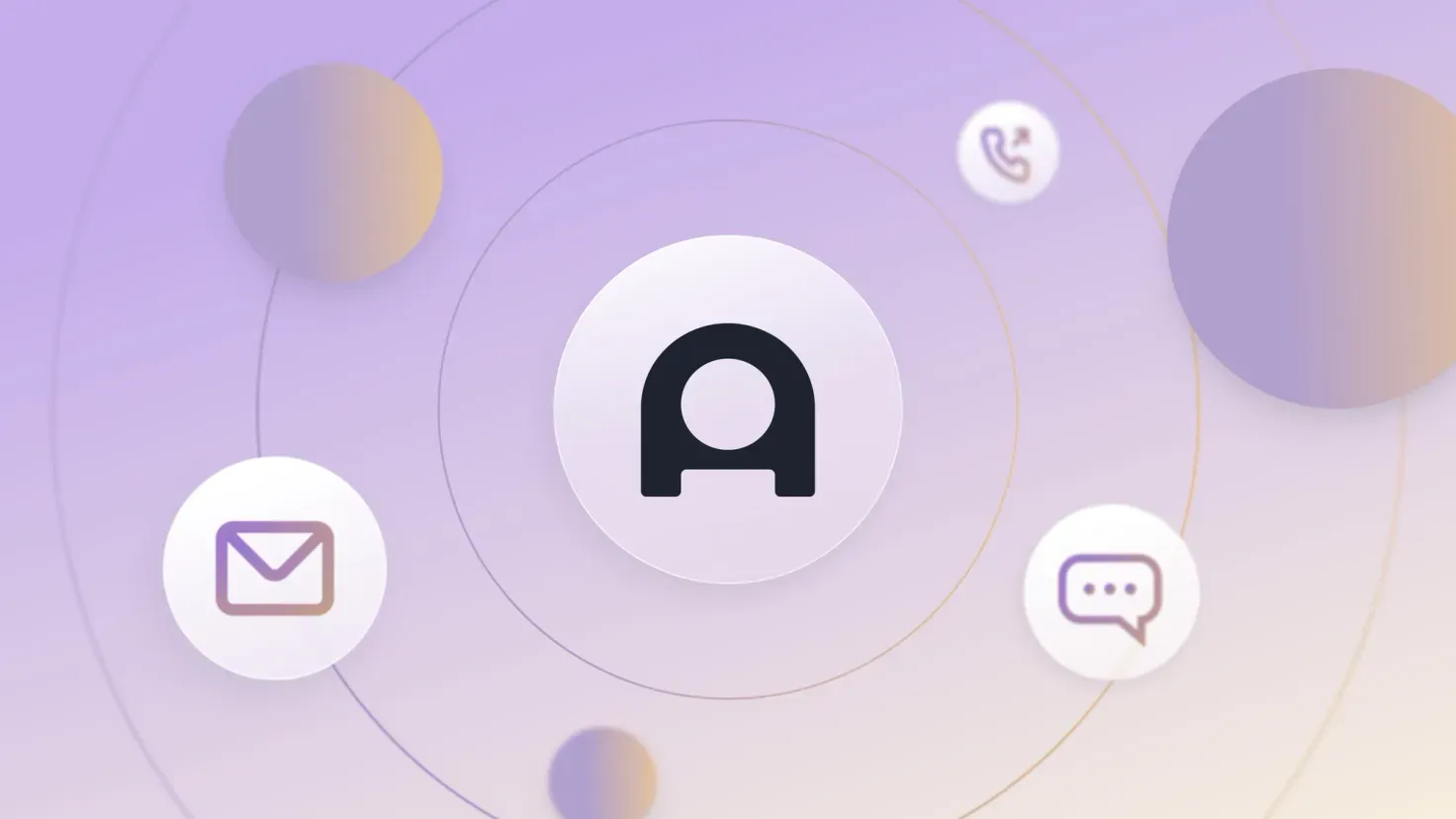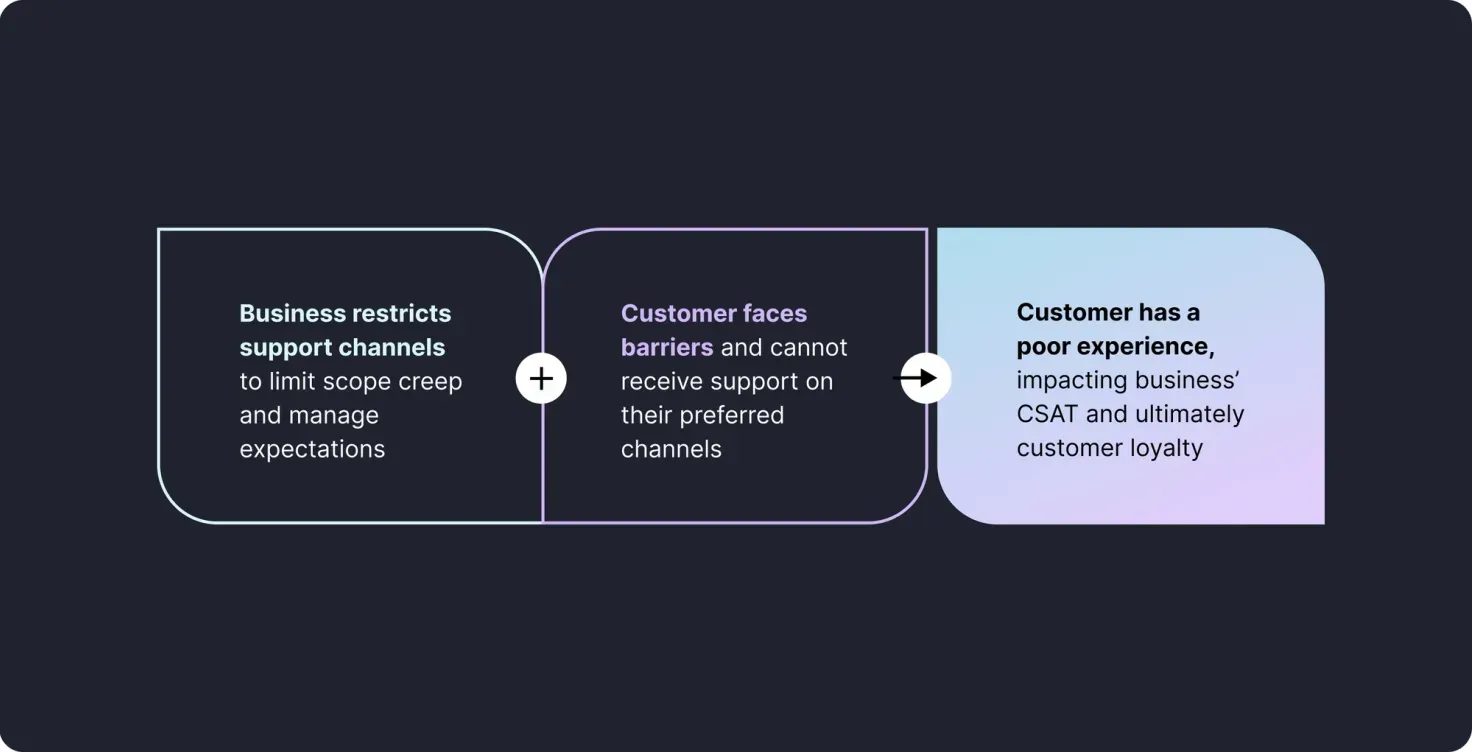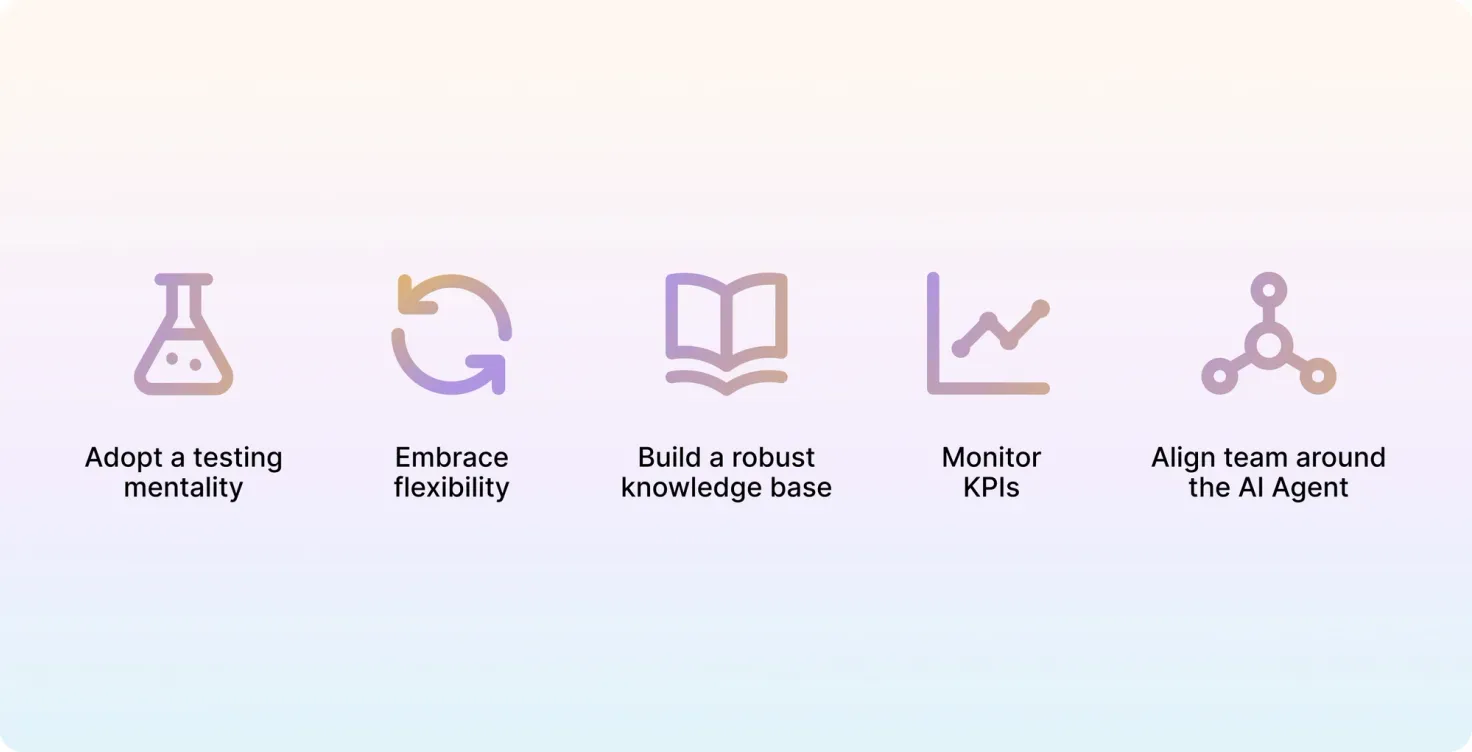
Guide to preventing, detecting, and correcting AI Agent hallucinations
Don't let AI hallucinations undermine your customer service. Get the insights you need to keep your AI Agents accurate, reliable and trustworthy.
Learn More

As your business gets more competitive in the market, the number one way to differentiate is through the customer experience. To really stand out, you’ll need to provide an incredible one.
That’s why companies are thinking about omnichannel customer service with more urgency than ever before. You need to meet customers where they are, but there are limitations to the customer service you can provide — budget, resources, technical knowledge.
Ultimately, you know these limitations hurt your customer experience in the long run, but they are often out of your control . This is the omnichannel customer service dilemma. So, how do we solve this?
Let’s break down the problem.
Gone are the days of the one-size-fits-all phone number for customer service. Today, you need to meet customers where they are, and provide extraordinary experiences when you meet them there.
Customers today are highly diversified — across different demographics and geographies — so it’s impossible to ignore that their communication preferences are going to vary. Some customers may want to pick up the phone and reach a real human ASAP. Others may prefer to use your mobile app. And some may not want to be torn away from their social media feed.
In the same way you niche your brand to better target customers for sales, you need to look at where your customers live. How do you show up where you’re easily accessible? And, even more challenging, how do you manage the cost channels require?
You know it’s expensive to be present on multiple channels and give customers a high quality experience. As a business leader, you need to limit scope creep, manage expectations, and think about your resources — which often translates into limiting your support channels, hours, or response times.
It feels like there’s no winning: either your resources are spread too thin to provide great service or your great service is limited. Regardless, your customer experience suffers.
But this does not have to be the case with AI customer service.

Customer service needs more flexibility. If I’m making every effort as a business to reach out to you, it should be just as easy for a customer to buy from me as it is to receive help.
For those of us who thrive in the dynamic world of tech and AI, the rapidly evolving landscape of communication is a welcome challenge. The channels for customer service keep moving, and it’s our job to keep up and deliver the experiences customers expect regardless of the channel.
With omnichannel AI customer service, you can innovate faster and more successfully than ever before. Ada customer, NinjaTrader, is a great example of this. I recently led a discussion with Walter Sledz, President of Revenue and Client Services at NinjaTrader, on how businesses should rethink this dilemma, and how they can implement omnichannel customer support effectively.
They’ve had great success on Ada’s AI Agent with chat , and more recently, branched out their channel strategy to onboard the AI Agent to email , and Walter realized AI allowed his team to experiment in a way that’s never been possible before.
He stated that his team “focused on figuring out how to create repeatable processes around monitoring and testing.” Using an AI agent became paramount to collecting customer insights, as his team leveraged their AI agent to “listen to the data and what the customers are saying.”
“When you combine all those things,” Walter explained, “we slowly, incrementally started feeling more and more comfortable turning [the AI agent] over [to an additional channel]— to the point now where we’re opening up an automated email channel in a complex product. It required work to set it up, but it’s definitely been worth it.”
With omnichannel AI customer service, you can enable faster, more successful innovation through flexible cross-channel experimentation.
The power of AI, and the advantage of omnichannel, does not come from blindly turning on every channel. Omnichannel is about leveraging the agility of AI to experiment across channels. It’s about finding the opportunities to increase your customer contact. And, ultimately, it’s a tool to improve the customer experience.
When you have an experimental mindset, partnered with the use of AI, you can propel your business farther, faster. We’ve seen it in our own customers .
We built our AI Agent to be the same underlying technology, the same large language models (LLMs), and the same technical approach whether the AI Agent is interacting in a chat window or on the phone or over an email. You don’t have to give it a lot of complex training or set up; you onboard and train it the same way you would a human agent.
As you build confidence on one channel or modality — on one branch of your IVR or on one customer support email address — it’s just a click of a button to scale that out to more means of communication.
A lot of the operational risks around omnichannel dissolve and it becomes simple: talk to your customers more, figure out where they want to talk to you, learn where they have the best conversations, and use AI to make that happen.
“I was a bit skeptical [of Ada Email], but I was really impressed when I saw the initial feedback. What really stood out to me was the ability for the AI Agent to parse different requests in the same inquiry, and then subsequently breakdown the responses to address each individual inquiry in that initial email. Being able to suss out the context of what they were asking was really important.”
- Walter Sledz, President of Revenue and Client Services, NinjaTrader
With AI, what used to require complex human training and workflows can be set up in seconds. Best part? The burden of trying to expand to your platforms, tooling, and headcount is now nonexistent.
And it only gets better over time. As you build confidence and start turning on more channels, you’re going to find some workflows perform better on different channels. You’ll also find that some channels solve specific problems more efficiently and some have more volume than you expected.
The benefits spread way beyond the consistency of responses across email and chat for Walter and his team.
“Automating two channels has freed up a lot of our agents to focus less on repetitive tasks and instead on advanced troubleshooting. It’s also given us breathing room as we’ve grown our business to refine some internal processes too.
By having multiple different interaction points to compare/contrast, it gets some actual data back to our product team about how people are interacting with us. It ties those data points together in a more concrete way.”

Dive deeper into what exceptional omnichannel customer service looks like with Ada's Chief Product & Technology Officer Mike Gozzo, and hear real-world customer examples of how AI agents are best suited to help you deliver it.
Watch the webinar